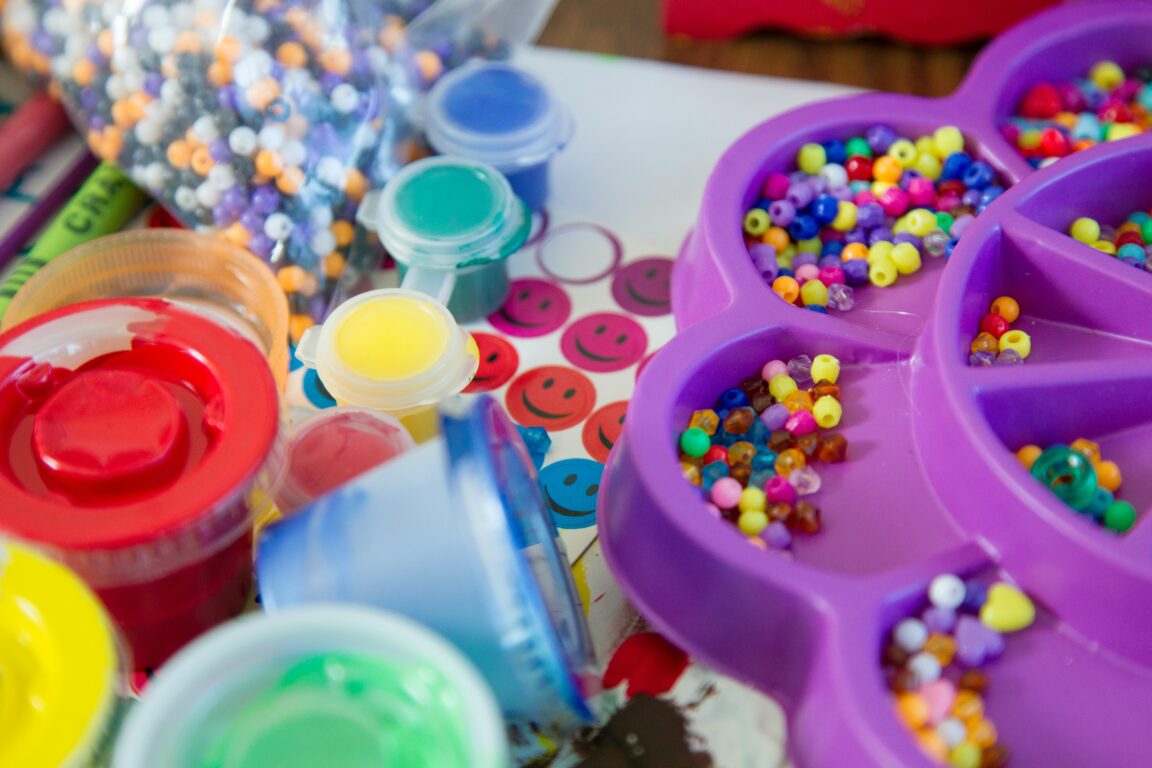Ever feel overwhelmed by all the papers, notices, artwork, and other items your kids bring home from school? Don’t be a pack rat!! We’ll show you how to “Trap the R-A-T” (RETAIN, ACT, THROW). Here are 7 tips to help you control your children’s clutter!
- School flyers: Nearly every day, your child brings home flyers announcing some school activity, bake sale, field trip, or other such notices. Unfortunately, these notices tend to pile up quickly unless acted upon. As soon as practicable, read the flyers and perform the following R-A-T exercise. RETAIN: All school flyers that contain information you are certain you need to keep (class lists with phone numbers, emergency procedures, etc.) ACT: Make sure you have your calendar while reviewing the notices, and mark any important dates. Once you mark the date, you should be able to “throw.” THROW: Anything you suspect you won’t need in the future, or have already acted upon. Don’t be afraid to THROW, as you can almost always go back to the school or your child’s teacher and ask about the content of the flyer, if necessary. The most important questions to ask yourself in deciding whether to RETAIN or THROW are: (1) What ‘s the worst thing that could happen if I threw this away? In almost every case, you will find that, at most, a minor inconvenience may occur. (2) If I THROW it and discovered I needed it later, could I replace it? Again, it is a very rare occurrence where a notice or its contents cannot be replaced, and (3) By the time I might need it, will it be obsolete? While it’s always hard to predict the future, most notices have a “shelf life” of a few weeks at most, after which the information they contain goes stale. As a rule of thumb, there should be approximately a 4 to 1 ratio of “THROW” to “RETAIN.”
- Artwork: While it would be great to be able to keep all of your child’s artwork in perpetuity, most of us don’t have enough room in the house!! I recommend that you follow the 3 “F” rule. FRAME: Some outstanding pieces of artwork deserve framing. Buy several acrylic frame boxes at The Container Store and hang the framed artwork around your house, in your basement, or in your child’s room. Your kids will appreciate the recognition they get when you go the extra mile to frame their art. FLUSH: No need to keep random scribble, or works that don’t meet your standards. FILE: Not all art is frameworthy. But it may not be “flushworthy” either! Keep those items which demonstrate talent, and those you may someday decide to frame. Make a file box for each child, and let them decorate the box. When they bring something home they want to keep, ask them to file it in their very own keepsake box. And don’t forget, much of the “filed” art can be used as gifts to relatives. You may also consider taking digital photos of your child’s art, and storing it on disk. Although it’s not the same as the original, this is a good way to reduce the clutter of the overwhelming amount of art that comes through the door.
- Art Supplies: To create a masterpiece, your child needs the proper tools. Everything from markers, crayons, paints, and brushes need to be organized or they will quickly overtake your home. Keep everything in a portable box that they can bring from room to room, and separate the crayons, markers and other stuff into baggies. Make it clear that they are responsible for maintaining order for their art supplies. You may also consider purchasing a small “art desk” and a bookshelf so they can have their own area in the house to do artwork. Put the supplies in separate lined baskets in the bookshelf for them to use.
- Birthday invitations: To keep track of all the birthday parties, it’s best to follow the “GO or NO-GO” rule. Once you get invited, check your calendar and try to make a decision quickly. Mark it in your calendar and make a birthday invitation file so you can keep the ones you need (e.g. if there’s directions you’ll need the day of the party). If it’s a “NO-GO,” respond within a day or two and “flush” the invitation.
- Organizing jackets, backpacks and shoes: It is not at all unusual to see kids walk through the door, tear off their jacket and backpack, throw them on a chair or on the floor, and leave their shoes lying around for you to clean up. With most kids averaging several pairs of shoes apiece, you can soon find yourself facing a “clutter emergency.” The best way to reduce clutter is to follow the 4 “P’s.” PATTERN: You will need to establish a pattern with your kids, whereby they follow a set routine when they come in the door. Don’t give up if, at first, your kids seem reluctant to follow or adhere to the pattern. Before they can follow the pattern, there needs to be an established PLACE for everything. You can start with a row of sturdy PEGS hung low, which can hold jackets and backpacks. Put the row of pegs close to the door where the kids enter. Next, you should consider a PLASTIC BIN or set of stacked bins, where the kids can throw assorted items such as shoes, hats, gloves, scarves, etc. You can purchase these items at any home or container store.
- Getting children ready for school: If you find yourself always rushing and fighting in the morning, one way to ease the crunch is to lay-out their clothes the night before. The trick is to prepare not one but TWO outfits, to allow them to make their own choice in the morning. Giving them the power to choose almost always eliminates the cry of “I don’t WANNA wear that!!” (even though they picked it out the night before). You may also consider buying a five-compartment hanging shelf for their closet (some places sell these with the days of the weeks already on them), and pick out the outfits for the whole week—including socks and underwear.
- Organizing your child’s clothes: For infants and toddlers (1) Hang everything that is hangable. That includes shirts, pants, sweaters and nighties. That way, everything is visible when you go to the closet to make your choices. (2) Buy a double rod. To state the obvious, this doubles your hanging room. These are easy to install and available at any children’s store or at Target. (3) Keep a bin near or in the closet, so if something doesn’t fit anymore, you can immediately toss it. (4) Go through the closet at least every quarter and make sure everything fits or is the right season.
- For toddlers and above: Teach proper clothing management to your children. It’s never too early to teach how to fold and put away clothes. Most kids enjoy helping mom or dad do the folding. Don’t worry if the folding job isn’t “perfect.” It’s the thought that counts! If your child is very young, you might want to label their drawers with cut-out pictures of the items contained in that particular drawer.
These are just a few of the ideas to help kill the clutter. To go the extra mile and help ensure a more permanent, clutter-free environment, a professional organizer can be an ideal “sanity-saving” investment.
Betsy Fein is the President of Clutterbusters!!, a professional organizing firm. For more info, go to www.clutterbusters.com, betsy@clutterbusters.com , Copyright 2020
Now that you have 7 tips to help you control your children’s clutter, send them to grandma’s so you can enjoy Date Night.








Comments
Loading…